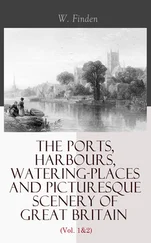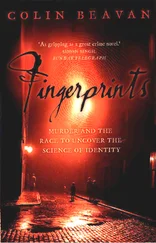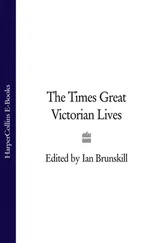The only indication that an intruder might have been at the crime scene was the scrap of bloodied newspaper discovered next to the privy. Whicher found, though, that this had not been torn from the Morning Star , as suggested at the inquest, but from The Times , the paper Samuel Kent took every day.
Whicher explained in his reports that he thought that the murderer had not taken Saville out through the drawing-room window, but by another route altogether: down the back stairs, along the passage past the kitchen, out of the kitchen door to the courtyard, and through a further door from the yard to the privy in the shrubbery. The murderer would have had to unlock, unchain and unbolt the kitchen door and unbolt the yard door, then secure both doors again on returning to the house, but this was perfectly practicable, and worth the effort. The kitchen door was only twenty paces, or yards, from the privy, Whicher pointed out, whereas the distance from the drawing-room window to the privy was seventy-nine paces. To walk from the drawing room to the privy also meant passing round the front of the building, immediately under the windows where the rest of the family and servants had been sleeping. Anyone who lived in the house would have known that the kitchen passage offered a much more direct and discreet route - in Whicher's words, 'the shortest and most secret way'. It meant passing the guard dog, but then the dog might not have barked at a familiar face. 'The Dog,' wrote Whicher, 'is perfectly harmless.' Even when the detective, a perfect stranger, approached the animal in daylight, it did not bark or bite.*
'I therefore feel quite convinced,' Whicher concluded, 'that the window shutters were merely opened by one of the inmates, to lead to the supposition that the child had been stolen.'
Whicher was familiar with this kind of feint, the false trail laid in an attempt to fox the police. In 1850 he had described to a journalist the methods of the 'Dancing School' of London cat burglars. They would watch a house for days, and find out at what time its inhabitants dined; this was the ideal moment for a burglary, since dinner tied up servants and employers alike. At the appointed hour, a gang member crept noiselessly, or 'danced', into the garret and plundered the upper storeys of small valuables, typically jewels. Before he made off across the rooftops with his spoils, the burglar would 'sell' (frame) a maid by hiding one of the jewels under her mattress. The planted jewel, like the open window in Road Hill House, was a 'blind', designed to point the detectives the wrong way.
Perhaps the killer did not only plan to mislead the police about how Saville had been removed, Whicher reasoned, but about where he had been taken - the open window faced the gardens and fields behind the house. The murderer might have hoped that the police would not find the body in the privy, which lay in the opposite direction. Whicher speculated that the killer's 'original intention was to have thrown the child down the privy . . . thinking it would sink into the soil out of sight'. The privy 'has a large cesspool about ten feet deep and seven feet square', he reported, 'and at the time contained several feet of water and soft soil'. Whicher believed that the assailant intended the child to drown or suffocate in the excrement, and then to disappear in it. If this plan had worked, there would have been no marks of blood to identify either the murder scene or the murderer. But the slanting splashboard, recently installed on the orders of Samuel Kent, left an opening of only a few inches between the lavatory seat and the wall, so that it blocked the body's descent into the vault. The killer, said Whicher, 'being thus foiled, resorted to the knife', snatching a weapon from the basket just inside the kitchen passage, and stabbing the boy in the throat and chest to make certain of his death. At least three of the knives in the basket, he said to the Somerset and Wilts Journal, would have served.
That afternoon Whicher searched Constance's bedroom. In her chest of drawers he found a list of the linen she had brought back from school, which included three nightdresses. He had already been told that one of these had vanished. He sent for Constance.
'Is this a list of your linen?'
'Yes.'
'In whose writing is it?'
'It is my own writing.'
He pointed to the list. 'Here are three nightdresses; where are they?'
'I have two; the other was lost at the wash the week after the murder.'
She showed him the two still in her possession - plain, roughly woven garments. Whicher noticed another nightdress and a nightcap lying on the bed. He asked Constance whose they were.
'They are my sister's,' she replied. Since Mrs Holley was still refusing to take in the family's laundry, Constance's two nightdresses were now dirty, and she had borrowed a clean one on Saturday from Mary Ann or Elizabeth. Whicher told Constance he must confiscate her linen list and remaining nightclothes. The missing nightdress was his first clue.
The word 'clue' derives from 'clew', meaning a ball of thread or yarn. It had come to mean 'that which points the way' because of the Greek myth in which Theseus uses a ball of yarn, given to him by Ariadne, to find his way out of the Minotaur's labyrinth. The writers of the mid-nineteenth century still had this image in mind when they used the word. 'There is always a pleasure in unravelling a mystery, in catching at the gossamer clue which will guide to certainty,' observed Elizabeth Gaskell in 1848. 'I thought I saw the end of a good clew,' said the narrator of Andrew Forrester's The Female Detective (1864). William Wills, Dickens' deputy, paid tribute in 1850 to Whicher's brilliance by observing that the detective found the way even when 'every clue seems cut off'. 'I thought I had my hand on the clue,' declared the narrator of The Woman in White in an instalment published in June 1860. 'How little I knew, then, of the windings of the labyrinth which were still to mislead me!' A plot was a knot, and a story ended in a 'denouement', an unknotting.
Then as now, many clues were literally made of cloth - criminals could be identified by pieces of fabric. One case that turned on such evidence was very close to home for Jack Whicher.
In 1837, a notorious murderer was traced to Wyndham Road, Whicher's own street in Camberwell. James Greenacre, a cabinetmaker who owned eight cottages in the road, killed and dismembered his fiancee, Hannah Brown, in his lodgings there in December 1836. He wrapped her head in a sack and carried it by omnibus to Stepney, east London, where he threw it in a canal. He dumped her torso on the Edgware Road, in the north-west of the city, and her legs in a ditch in Camberwell. The star of the police investigation was PC Pegler of the S (Hampstead) division, who found Hannah Brown's torso. He traced Greenacre through a piece of cloth - the sacking in which the body parts were wrapped - and secured his confession through another: a snippet of thick nankeen cotton found on the Edgware Road, which matched a patch on the frock of his girlfriend's baby. The unravelling of the crime was reported with fascination in the press. Greenacre was hanged in May 1837. Whicher joined the police force four months later.
In 1849 the London detectives, Whicher, Thornton and Field among them, found the Bermondsey murderess Maria Manning by way of a bloodstained dress she had stashed in a railway-station locker. Manning and her husband had murdered her former lover and buried him beneath their kitchen floor. The detectives tracked down the couple with the aid of telegraph messages, express trains and steamships. Whicher checked the hotels and railway stations in Paris, and then the ships sailing from Southampton and Plymouth. He used his experience in tracing banknotes to help shore up the evidence against the killers. Eventually, Manning was caught in Edinburgh, her husband in Jersey. Each accused the other of the crime, and both were sentenced to death. The executions drew tens of thousands of spectators, while the 'broadside' ballads about the case sold two and a half million copies. A series of woodcuts printed that year showed the investigators as dashing action heroes, and the Commissioner praised his men for the 'extraordinary skill and exertion' with which they had worked on the case. He awarded Whicher and Thornton a bonus of PS10 each; Field, as an inspector, was given PS15.
Читать дальше












